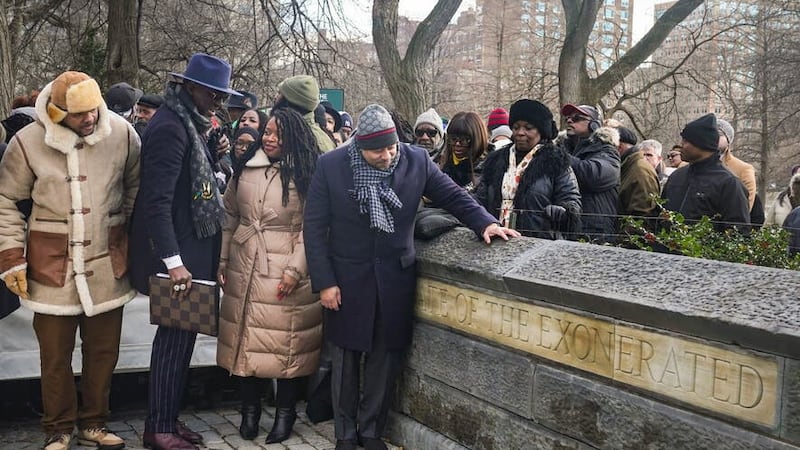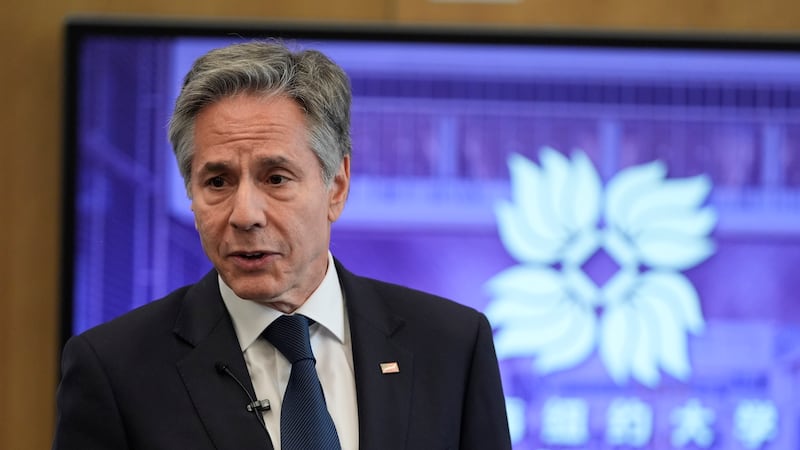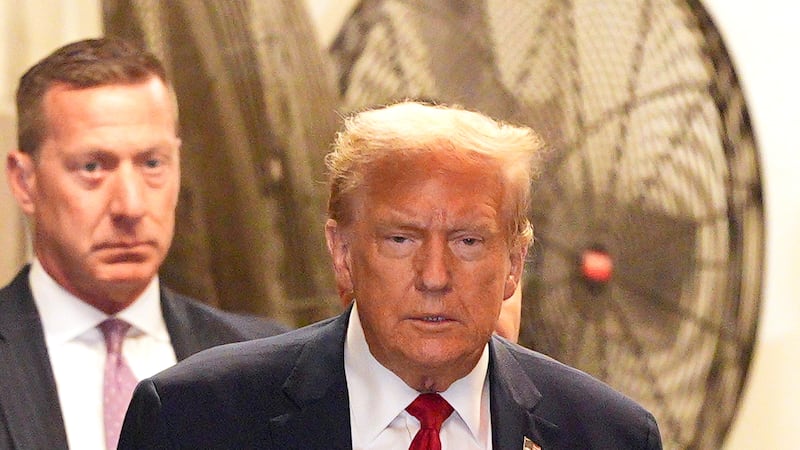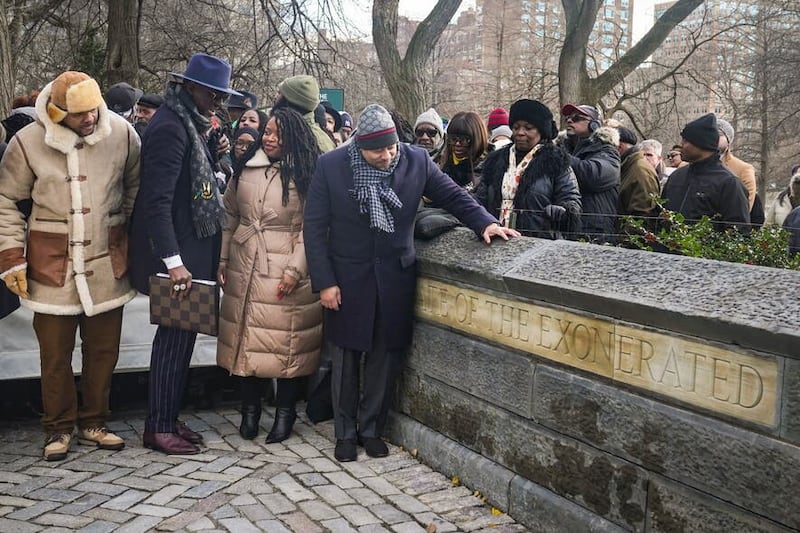An entryway to Central Park in New York has been dedicated to remember the injustice that imprisoned five black and Latino teenagers after they were wrongly convicted of the 1989 rape of a white jogger.
The entryway on the northern perimeter of the park flanking Harlem is now known as the “Gate of the Exonerated”.
Scores of people arrived to dedicate the park entry to the men once known as the Central Park Five but now remembered as the Exonerated Five.
It commemorates not only the miscarriage of justice suffered by the five men, organisers say, but also the unknown others who might have been wrongly imprisoned.
“This is a moment. This is legacy time,” said one of the men, Yusef Salaam.
“We are here because we persevere,” he said to a cheering crowd.
Monday was the first time for 33 years that Raymond Santana, another of the men, now in his 40s, has returned to Central Park.
“We were babies, who had no dealing with the law. Never knew what Miranda was,” said Mr Santana, as he recounted when police began interrogating him.
Mr Santana was 14 and Mr Salaam was 16 when they and three others — Kevin Richardson, 14; Korey Wise, 16; and Antron McCray, 15 — were wrongly tried for the rape of a 28-year-old woman, whose brutal attack left with her with permanent injuries and no memory of the assault.
Matias Reyes, a murderer and serial rapist already in prison, would later confess to the crime.
The convictions of the Central Park Five were thrown out in 2002 after the men served six to 13 years in prison.
“It needs to be known what we went through. We went to hell and back,” said Mr Richardson. “We have these scars that nobody sees.”
The three men — Mr Wise and Mr McCray could not attend — spoke about how the criminal justice system is stacked against people of colour.
The gate, they said, would stand as reminder of the injustice of the past but also of those still being committed today.
“This is an important time right here — the Gate of the Exonerated, this is for everybody,” Mr Richardson said, “everybody that’s been wronged by cops.”
The remembrance — words etched in stone on a waist-high wall — was years in the making.
Other entrances to the park have been labelled to reflect groups of people who live and work in the city, with names like Artisans’ Gate, Scholars’ Gate and Strangers’ Gate.
Mayor Eric Adams, who was just starting his career as a New York City police officer during the 1989 incident, arrived to the ceremony to pay tribute to the men.
“To these soldiers here, you personify the black male experience,” the mayor said, addressing the men.
Alvin Bragg, who now leads the Manhattan District Attorney’s Office, apologised for the men’s ordeal.
“The truth is we shouldn’t be here today,” he said.








